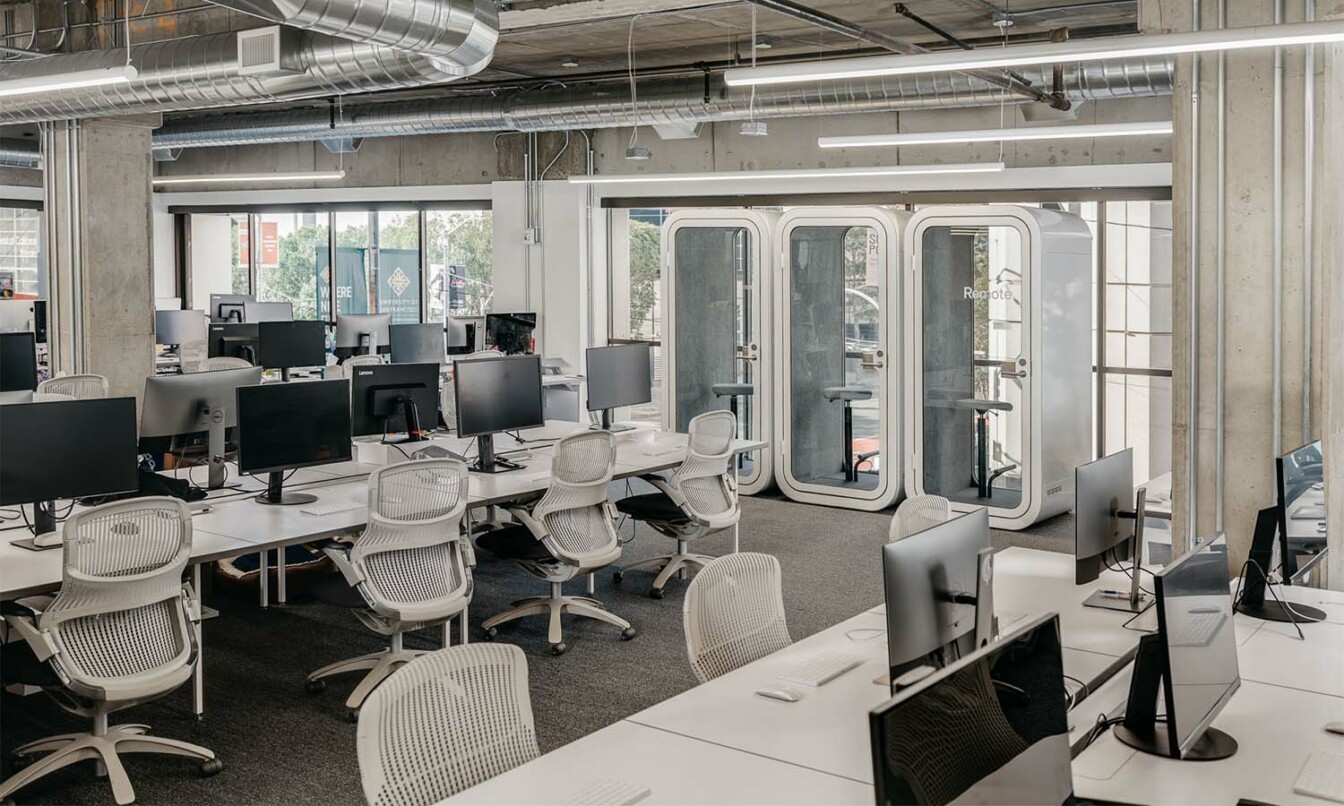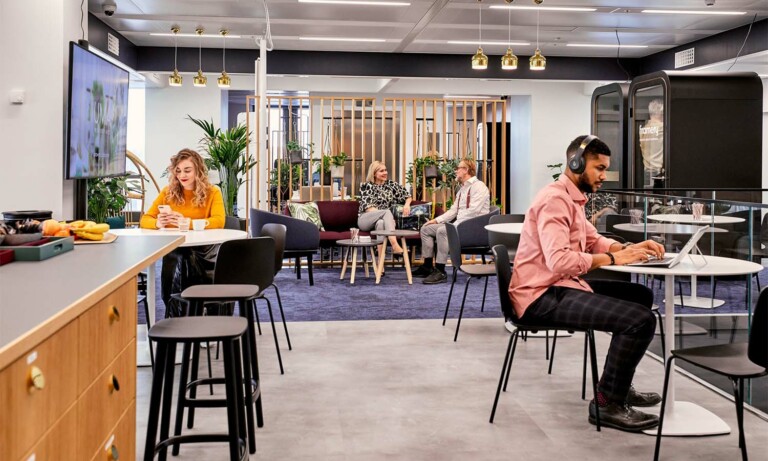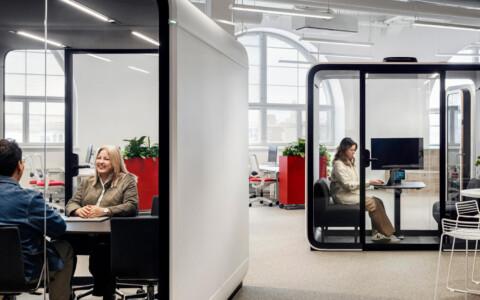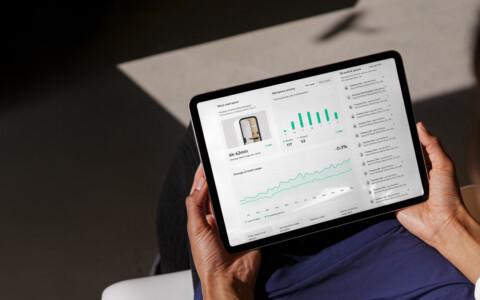When you hear the word agile, you might think of specific agile methodologies used for software development. As the needs and demands of both employees and companies change, the workspace itself has to become agile as well. An agile work environment follows many of the same principles, namely flexibility, collaboration, adaptation, and efficiency.
What is an agile work environment?
One of the defining characteristics of an agile workspace is flexibility. The layout and design of the office should adapt and provide different kinds of spaces or zones for different purposes. For example, the office needs to have both accessible spaces for meetings and teamwork as well as private zones that are free of distractions. It should also house those who come to the office only occasionally while working most of the time from home.
An agile workplace, such as an office space, consists of areas with different purposes depending on the task at hand and individual employees’ preferences.
Different areas of an agile workspace include:
- Open workspace. An open office plan enables agile working and collaboration between colleagues. Creativity flourishes when people can communicate and share ideas in the same space. An agile open workspace is also great for hot-desking where people can come in for a day at the office without a designated desk for them. Just make sure that there is enough dedicated space for focused work as well.
- Areas for collaboration. Even an open layout office needs separate spaces for collaboration to be truly agile. These do not have to be large meeting rooms, a small and intimate meeting pod for 2-6 people is large enough. The Framery Six meeting room is a perfect alternative for fixed meeting rooms.
- Quiet spaces. A noisy open office full of distractions is not always ideal for focused work. An agile work environment has enough private spaces for individual employees to focus. Employees can just grab their laptops and enter a soundproof, quiet space that is reserved just for them. Quiet spaces are also great for video meetings and private phone calls that could distract others in the office.
- Breakrooms and communal areas. A truly agile work environment is made for more than just work. Taking breaks and detaching from work with colleagues are important for employees’ satisfaction and recovery. These kinds of breakout spaces can be used for a shared lunch or a relaxed chat with others.

An agile workspace is built for the future
Creating an agile workspace is a way to futureproof the office and anticipate changes in the future. A futureproof workspace stands the test of time and can be flexibly adapted to changing needs of the company and its people. For example, instead of costly office renovations, a modular approach to office design saves valuable resources, minimizes unused floor space, and enables changes in the future.
The long lifecycle of an agile workspace serves the company’s needs even when more employees come in or there are suddenly fewer people working in person at the office. A long-lasting office is also more sustainable as it allows the same space to be reused with minimal changes to the layout thanks to its modular design.
Framery office pods are perfect for creating a more agile working space as the pods can be used to add more quiet areas for focused work or small meeting rooms for collaboration.
Instead of renovating and redesigning the office completely, Framery pods can be placed where they are needed the most. With their industry-leading soundproofing, the pods enable distraction-free work even in the midst of a busy and often noisy open office.
To get the most out of the office pods, Framery Connect provides valuable data and analytics that help you to monitor when the pods are used or what is their capacity at certain times. By connecting the pods with your organization’s calendar, the pods can be reserved ahead of time and employees can easily check which pods are available and when. With data about pod usage at your disposal, you can better optimize how the pods and the office space as a whole are used. Framery Connect is available for the Framery One soundproof office pod.
The benefits of an agile workplace
An agile workplace benefits both the company and, most importantly, its employees. Here are some of the benefits of an agile work environment:
- Fostering collaboration and creativity. An agile team needs an agile environment to match their needs. The right kind of workspace can encourage collaboration, leading to new ideas that would not be possible if all employees just sat behind their own desks or stayed at home. Fewer physical barriers lead to fewer restrictions for collaboration as well.
- Flexibility to meet people’s needs. An agile workplace goes perfectly together with hybrid work. Whereas hybrid work is characterized by where you work, an agile work environment allows employees to choose not just where but how they work. Some choose to work most of the time at home so an agile space does not need to have a workstation reserved just for them.
- Modularity and adaptability. An agile work environment can be tailored to the company’s needs and is adjustable to meet future demands. Movable office pods and open working spaces without fixed walls allow for easy adjustments to the physical space. Modularity enables office solutions, such as soundproof pods, to be updated with new technological features or repaired to promote a longer lifecycle.
- Improved employee well-being and satisfaction. Your employees are happy when they can work the way that’s best for them. Happy employees are less likely to resign and are also more productive. An agile work environment can improve work satisfaction by providing the right kind of space for everyone at the office.
An agile workplace changes to accommodate new people and enables flexible working for employees. Framery Subscribed fits perfectly into an agile office space design. Subscribed is currently available in selected markets and allows today’s agile workspaces to expand by offering our Framery office pods with a flexible monthly subscription.




